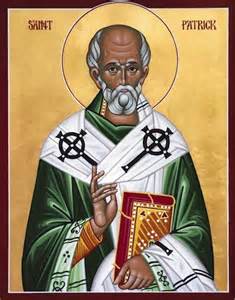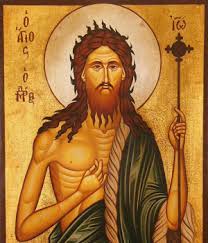“You were taught to put away your former way of life, your former self…, and to be renewed in in spirit of your minds, and to clothe yourselves with the new self, created according to the likeness of God in true righteousness and holiness.”
Ephesians 4:22-24, NRSV
“Christ with me,
Christ before me,
Christ behind me,
Christ in me,
Christ beneath me,
Christ above me,
Christ on my right,
Christ on my left,
Christ when I lie down,
Christ when I sit down,
Christ when I arise,
Christ in the heart of every man who thinks of me,
Christ in the mouth of everyone who speaks of me,
Christ in every eye that sees me,
Christ in every ear that hears me.”
St. Patrick
Today, St. Patrick’s Day is celebrated in Ireland and many other places of this world. Now outside of Ireland, St. Patrick’s Day is a mere excuse for drinking and having rowdy celebrations of whatever is considered ‘Irish’ (including elements from Irish folklore). But St. Patrick’s Day, like other ancient church feast days (St. Valentine’s Day, for example), goes back to an actual person with an actual life lived for the glory of God.
St. Patrick is the most important of the patron saints of Ireland. There are many legends surrounding the life of St. Patrick (snakes and shamrocks, anyone?). The most reliable account of his life we have from a letter he wrote himself, and in which talks about his turbulent life journey, which ultimately led him to God and the service for others.
Patrick lived in the 5th century and came from a rather privileged family of clergy in Roman Britannia (modern day England or Wales). At age 16, he was kidnapped by Irish pirates (and I actual walked on one of the beaches that is claimed to be the location of this historic event) and brought to the Emerald Island. Patrick worked as a slave in Ireland for six years, pining for his old life, and eventually hatching a plan for an escape. After a long and perilous journey, Patrick finally arrived back home.
The most remarkable thing about St. Patrick, in my opinion, is not so much what legends tell us about this man; the most remarkable thing might just be that, shortly after he arrived back on the English Isle, he was called by God to return to the place of his misery –this time, as a missionary. And Patrick heeded the call. Patrick was able to overcome fear and resentment, and his life, effectively, was changed by his willingness and ability to forgive.
The rest is history. St. Patrick wasn’t the first one to bring the gospel to Ireland, but he proved to be a very successful missionary by not just dismissing old religious traditions and symbols, but by explaining them in the context of the Christian faith. Celtic crosses, like the ones you see on St. Patrick’s cloak in the image, are an example of how pre-Christian symbolism and patterns were incorporated into the new faith.
St. Patrick was able to take what was dear to the people he was sent to preach the good news to, and to transform and transcend them in the light of the Christian faith. Maybe we could learn a lot from Patrick in this day and age, and find ways to spread God’s good news of new chances and a new life for all creation using what is dear to people in society today. As long as we understand that Christ is in everything and through everything, we need not be afraid of changing our ways.





